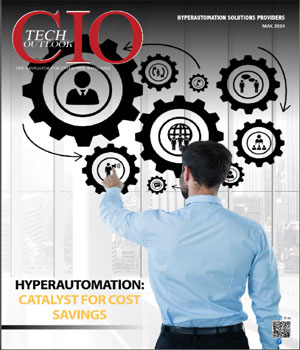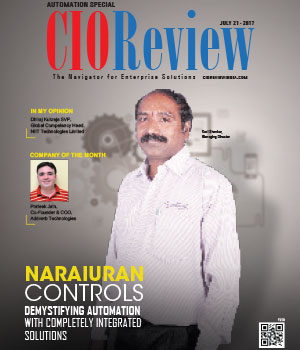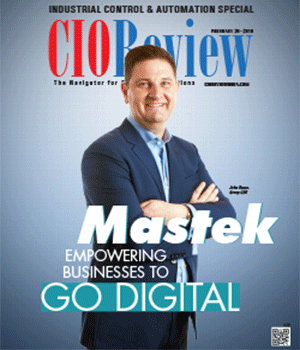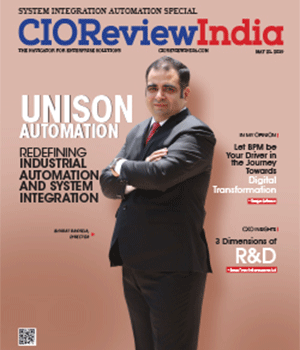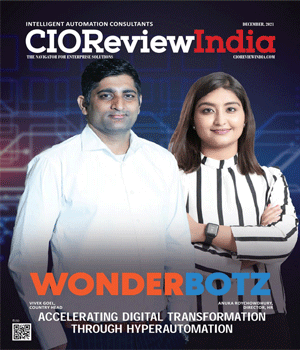
Enterprise-wide Approach Needed for Successfully Leveraging Hyperautomation
Arvind Jha, Senior Vice President, Software Development, Newgen Software

Arvind Jha, Senior Vice President, Software Development, Newgen Software, in an interaction with CIOTechOutlook, shares his views on effective implementation of digital strategies, benefits of hyperautomation, and how to leverage hyperautomation capabilities.
Digital transformation has become pertinent for organizations globally. What is a common mistake made by organizations while implementing their digital strategies?
You are right; digital transformation is pervasive, and nearly all CXOs are talking about it, creating SWAT teams, allocating budgets, running initiatives, and looking at it as the next big thing for growth. There is an existential threat for many traditional enterprises as they need to compete with the new-age, digital native, and innovative startups. Thus, organizations are looking at digital as the low-cost scaling opportunity to power their growth to the next level.
In my view, most digital initiatives have delivered positive results. But enterprises are facing challenges while scaling their digital initiatives enterprise-wide, streamlining all business processes to deliver consistent experiences, and enabling data management, analytics, and innovation for rapid evolution.
Enterprises have realized that traditional point solutions and the highcode approach do not help in scaling digital initiatives. Leaders have also understood that ad-hoc transformations and limited modernizations do not move the needle on expected outcomes. They need a planned, systematic review of the customer-facing and employee-facing systems and internal business processes and the ability to rapidly develop, deploy, and evolve to meet customer expectations.
This is why low-code approach and low-code application development platforms are gaining a lot of traction. A low code platform that provides consistent user experience across a portfolio of applications, integrates enterprise ecosystems, supports insights and analytics, uses modern technologies like artificial intelligence(AI), machine learning (ML), process mining, and enables collaboration across business users and pro developers can facilitate successful outcomes from digital transformation initiatives.
How do you define hyperautomation? What are the key benefits associated with hyperautomation?
Hyperautomation, in essence, is using a programmatic approach to automate every business function, process, workflow, and task. You can think of it as “workflow on steroids.” It is the art of leveraging automation technologies to accelerate all facets of the user journey and experiences, internal processes, and efficiencies, thereby driving business growth.
Usually, we see organizations prioritize a portfolio of workflows/applications in a given area for transformation and look at hyperautomation technologies to deliver the best possible experience across the portfolio.
Hyperautomation facilitates organizations to improve customer experience by reducing the friction in user self-service applications and streamlining broken on-boarding processes. It enables faster support and sales query resolution through relevant integrations, AI/ML, and assistive technologies. It helps enterprises achieve operational excellence by reducing the handover time between agents, departments, partners, and subsidiaries via robotic process automation (RPA), rule automation, and exception and escalation management. Furthermore, it also ensures continuous innovation across all business aspects with insights, analytics, and rapid evolution capability.
How can organizations successfully leverage hyperautomation capabilities? What should be the right approach?
Organizations must contemplate an enterprise-wide approach for successfully leveraging hyperautomation. They must take an approach that entails integrating process automation, content services, and communication tools with modern technologies such as AI and ML, low code, and analytics. They need to move their workloads to cloud-based infrastructure for better accessibility, on-demand scalability, and easier management.
This comprehensive approach will empower organizations to deliver a portfolio of applications with a consistent user interface, ensure rapid application development and deployment, and generate deep insights for finding product value fit. Investing in a modern unified platform equipped with these technologies will help organizations empower users at multiple levels and harness hyperautomation by running numerous digital initiatives simultaneously.
CIO Viewpoint
Aligning IT Roadmap with Business Objectives: A...
By Subhash singh Punjabi, CISO & Head Enterprise Architecture, Deepak Fertilisers & Petrochemicals Corporation Ltd
Empowering Women: Shaping the Future of Industry
By CIOTechOutlook Team
Scaling AI: Finding the right Biztech...
By Sujatha Gopal, CTO - Communications, Media & Information Services (CMI), Tata Consultancy services
CXO Insights
Addressing the Challenges in Logistics Automation
By Janifha Evangeline
Digitalization - the critical enabler for...
By Rajesh Ramachandran, Global Chief Digital Officer - Process Automation & ABB Ability, ABB
Enterprise-wide Approach Needed for...


